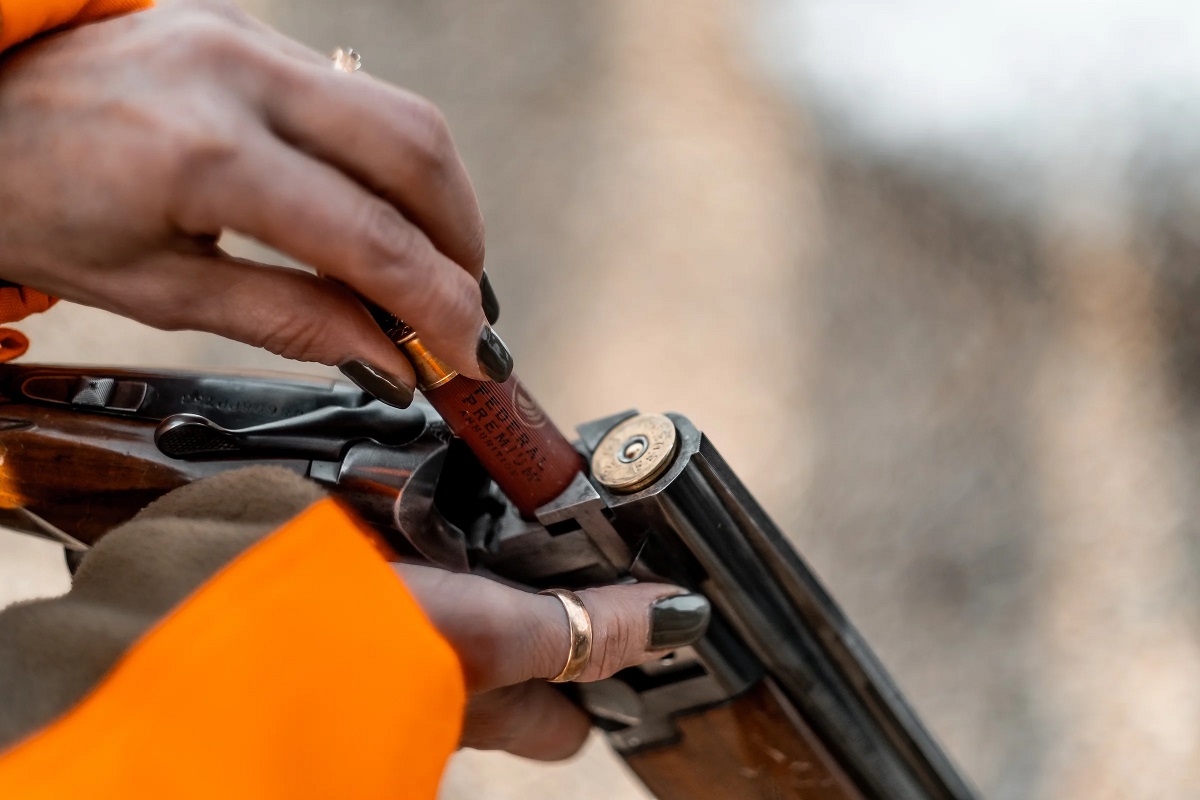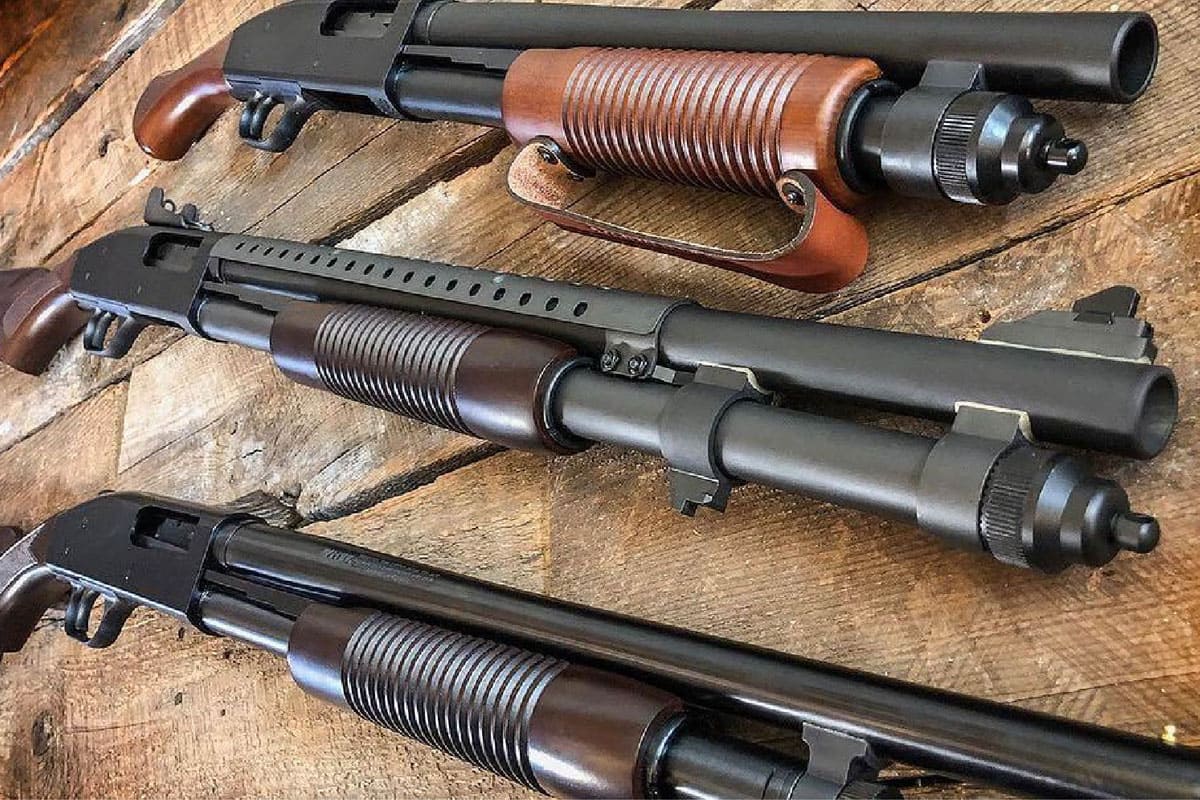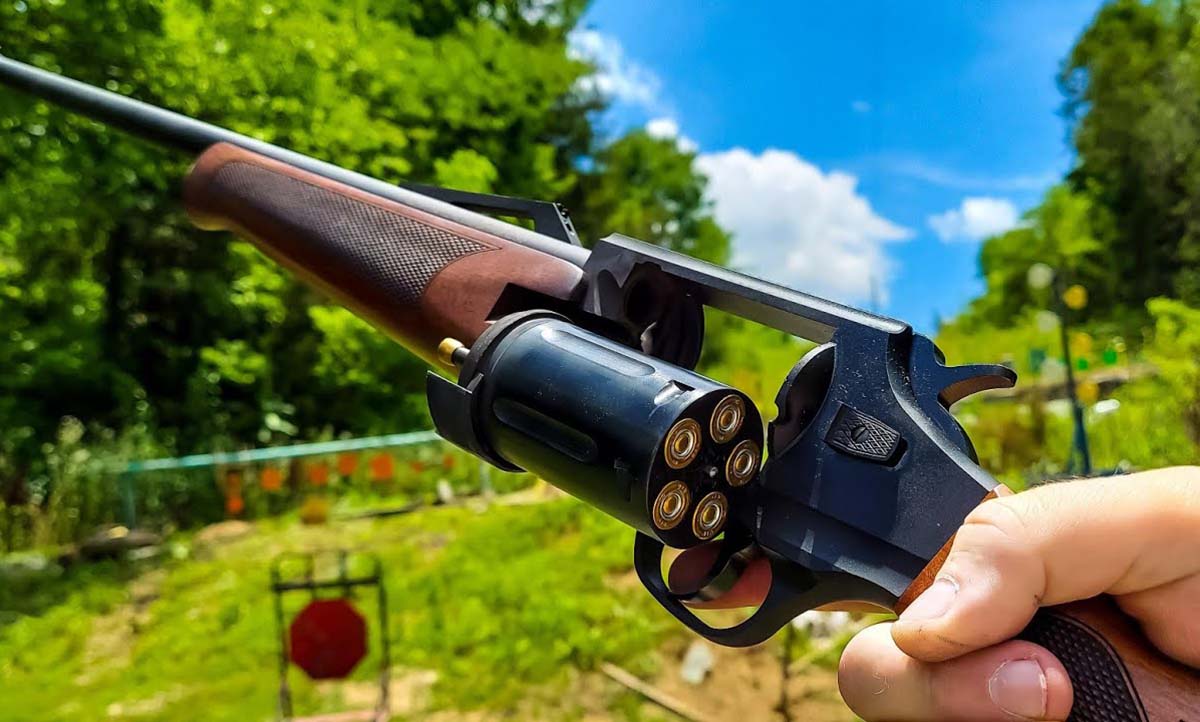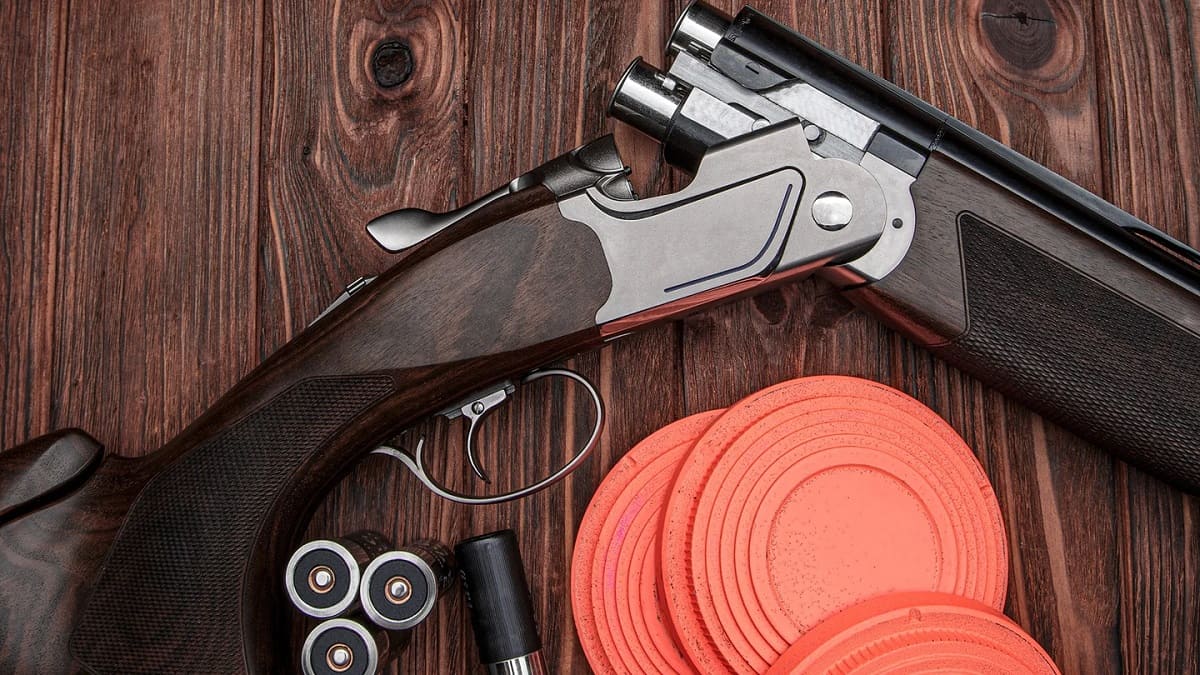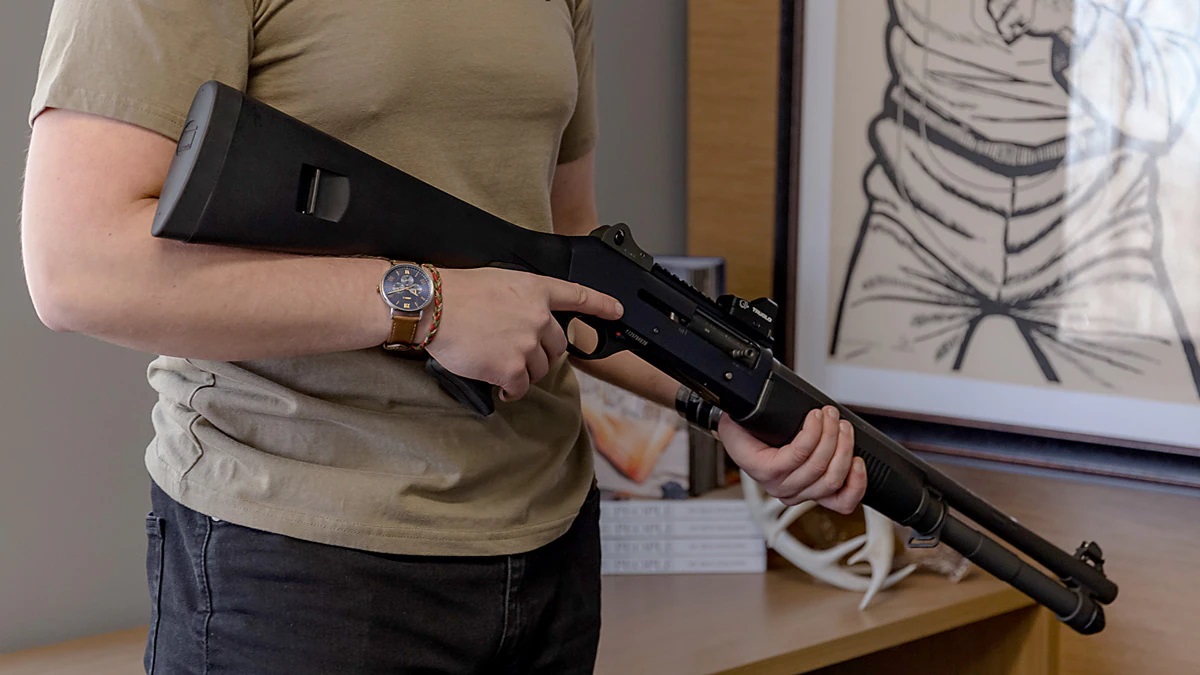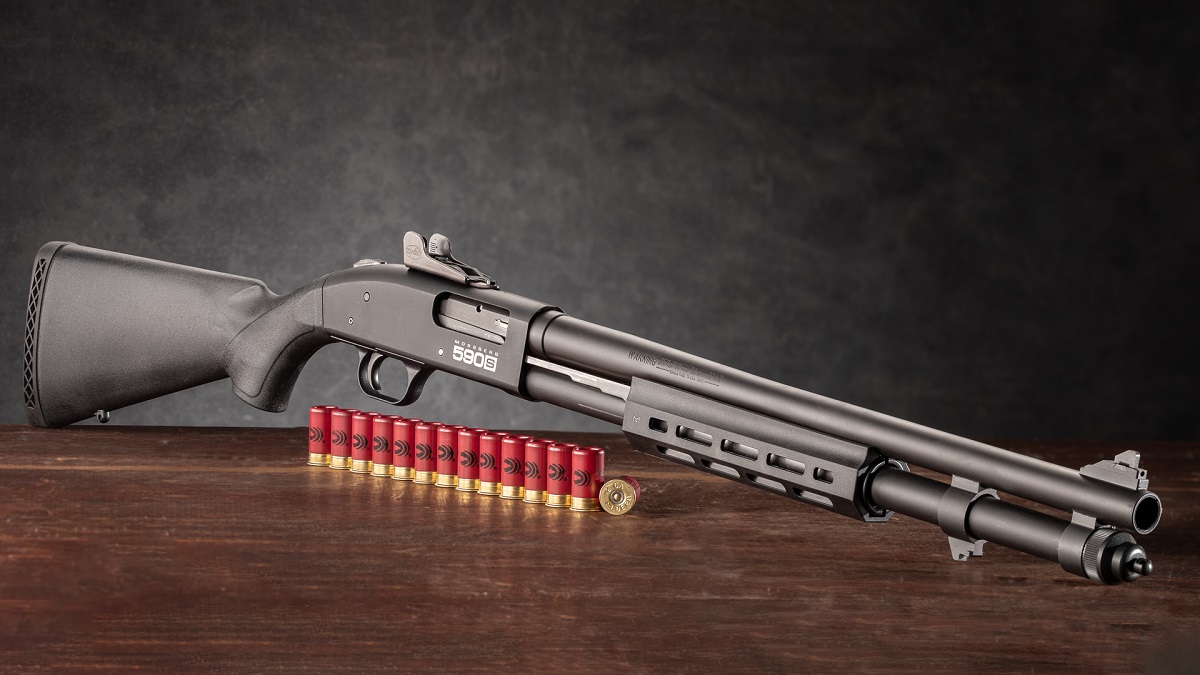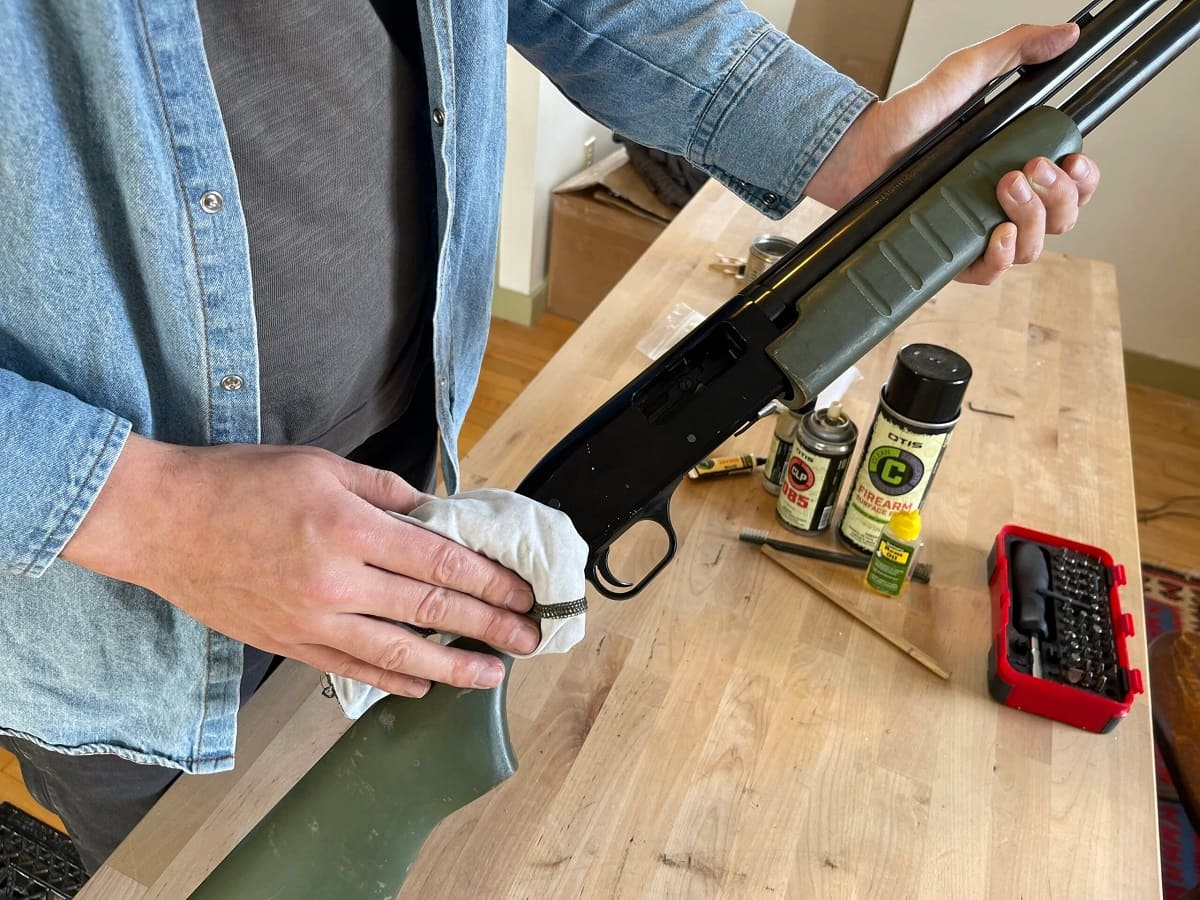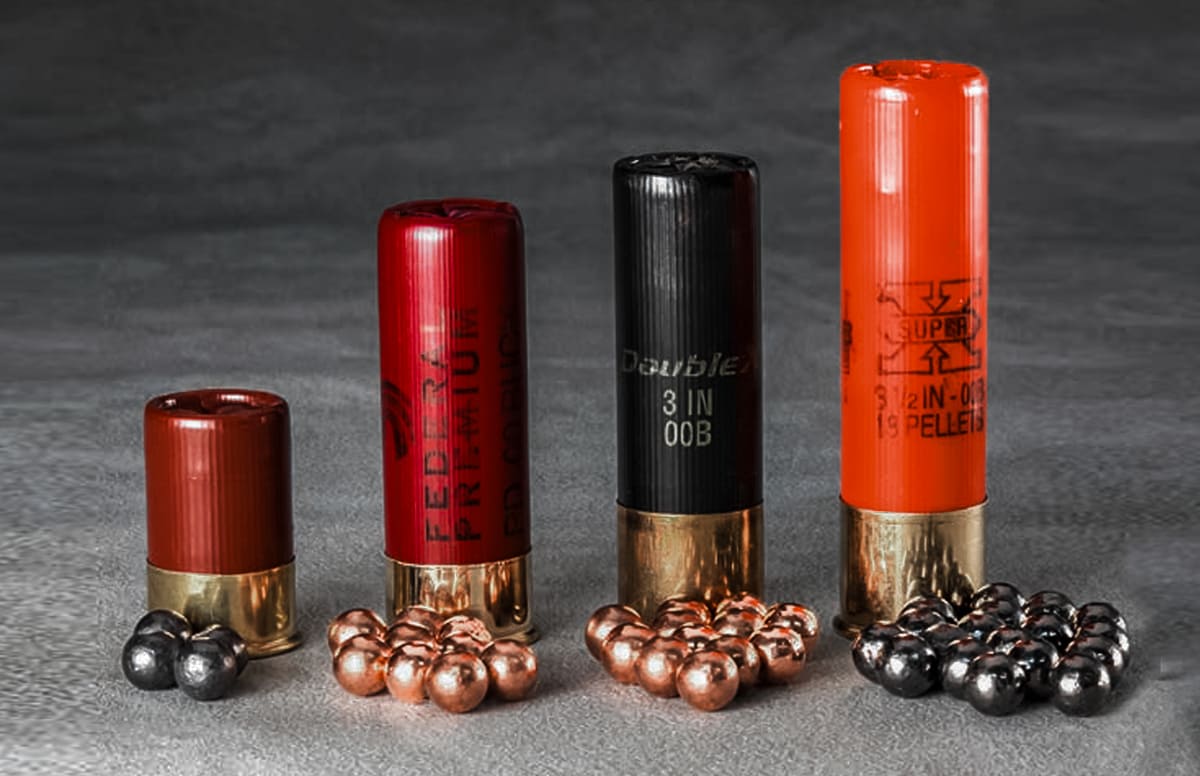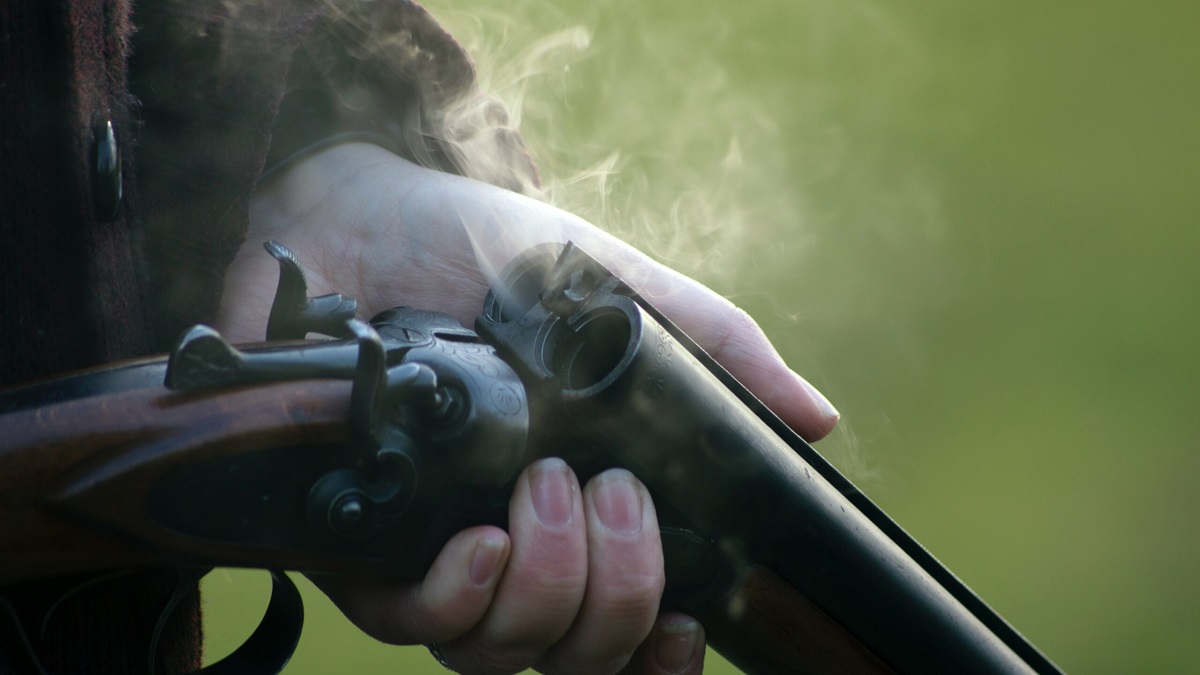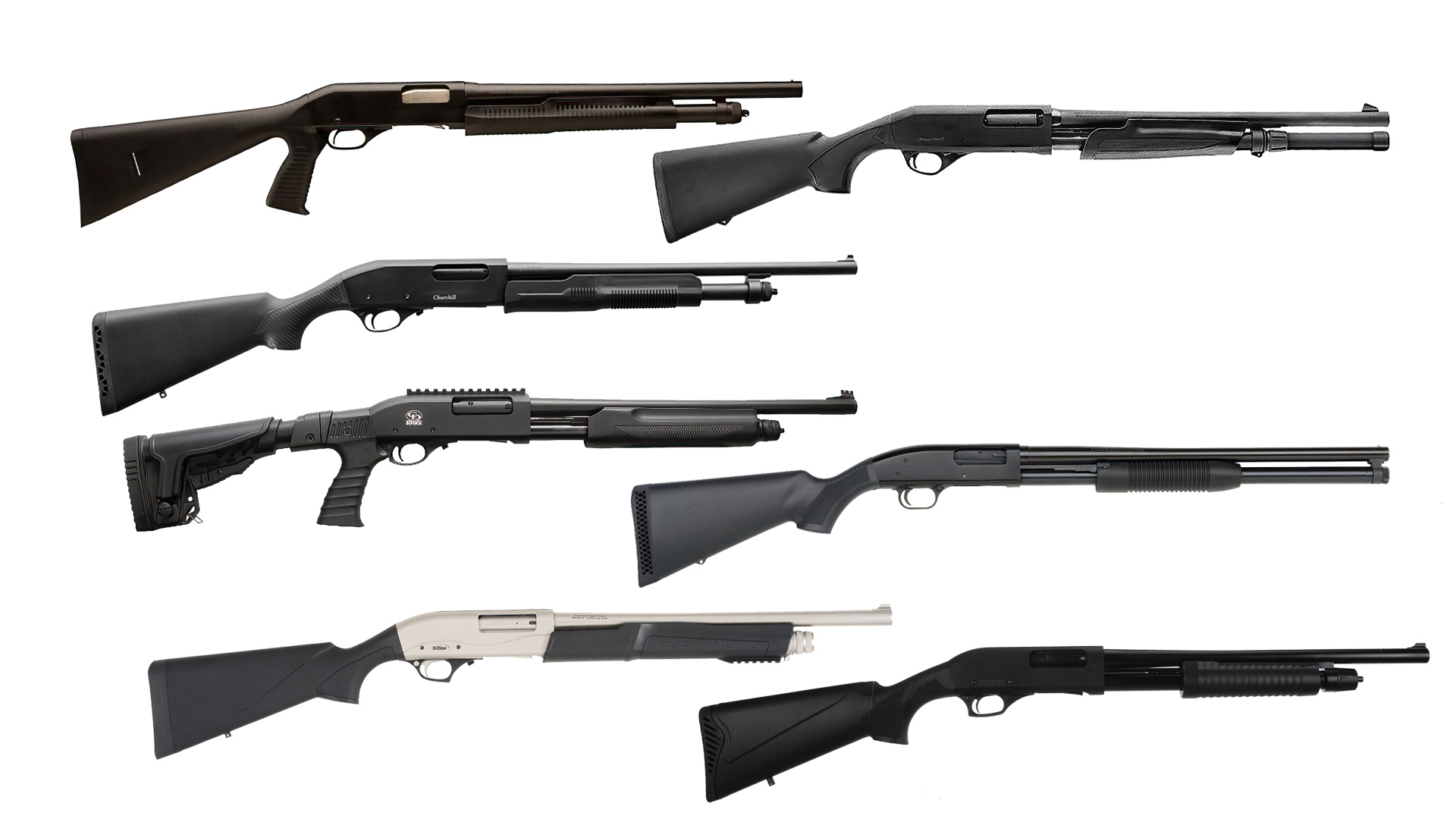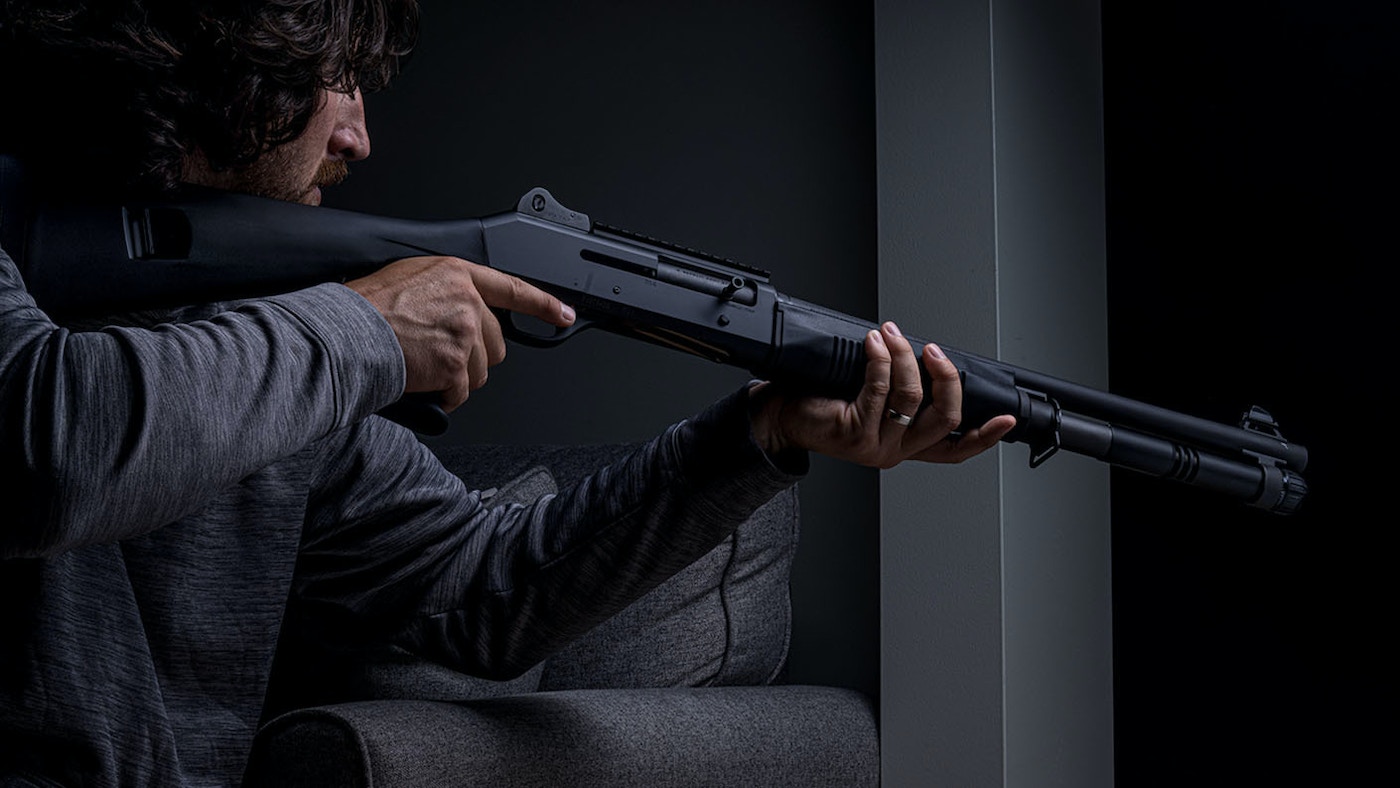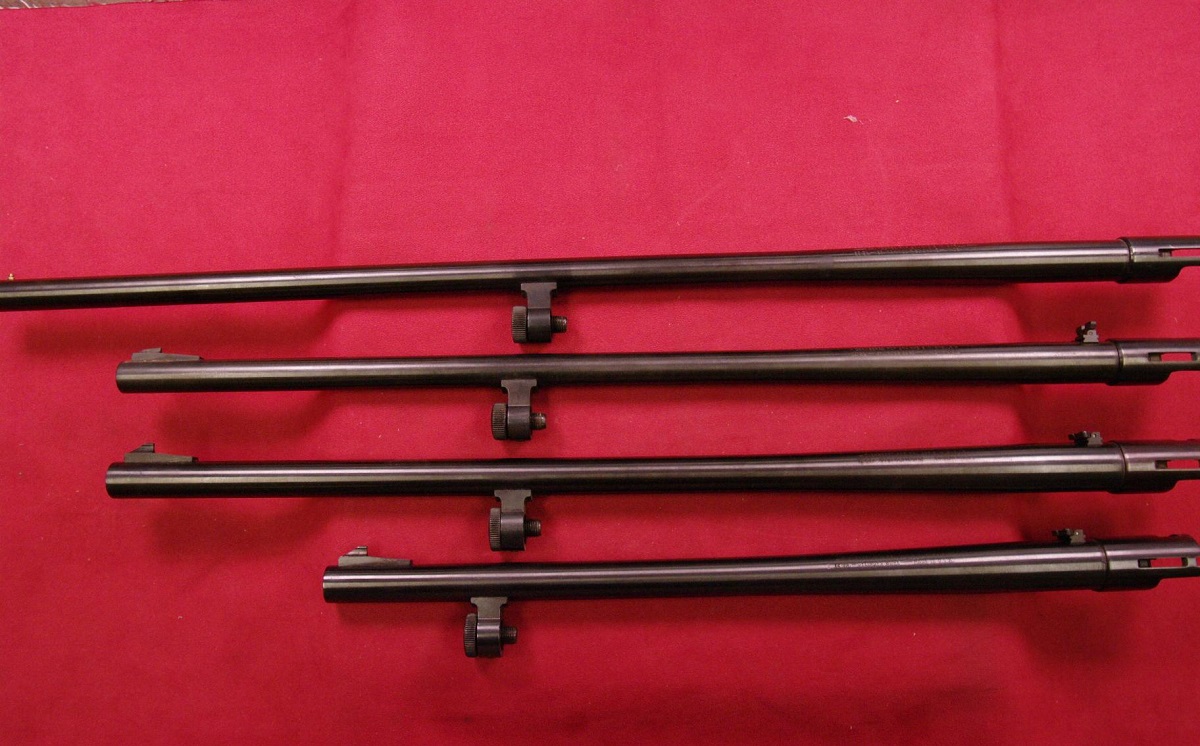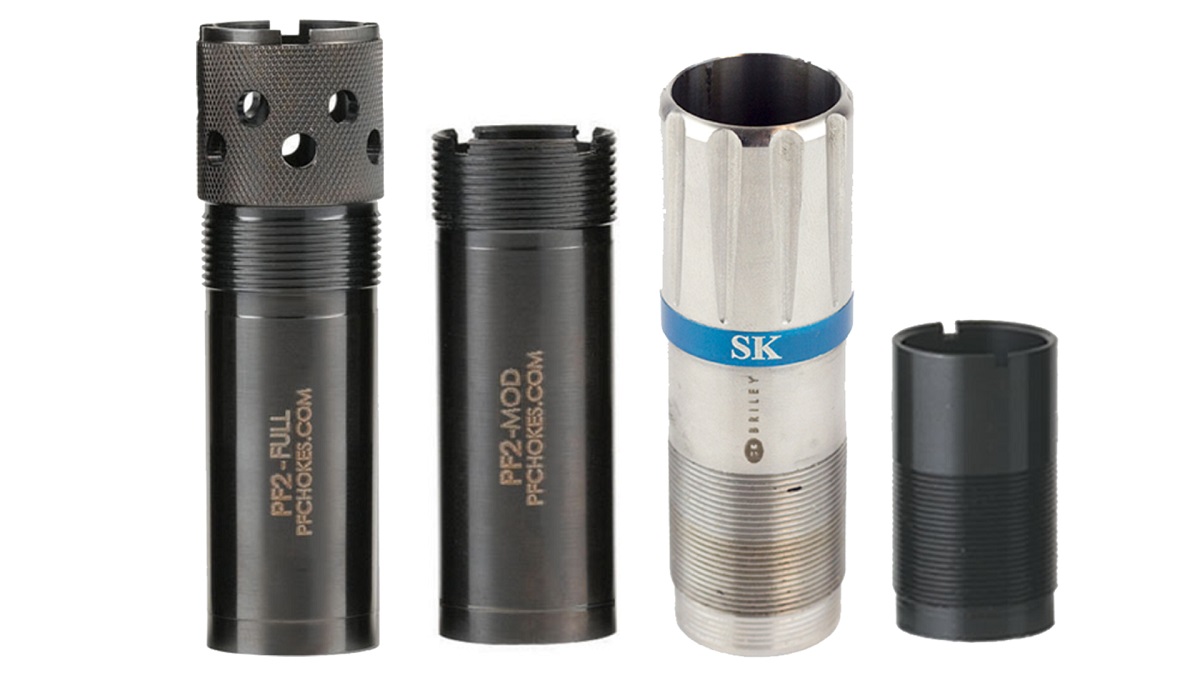Home>Home Security and Surveillance>How To Use A Shotgun For Home Defense
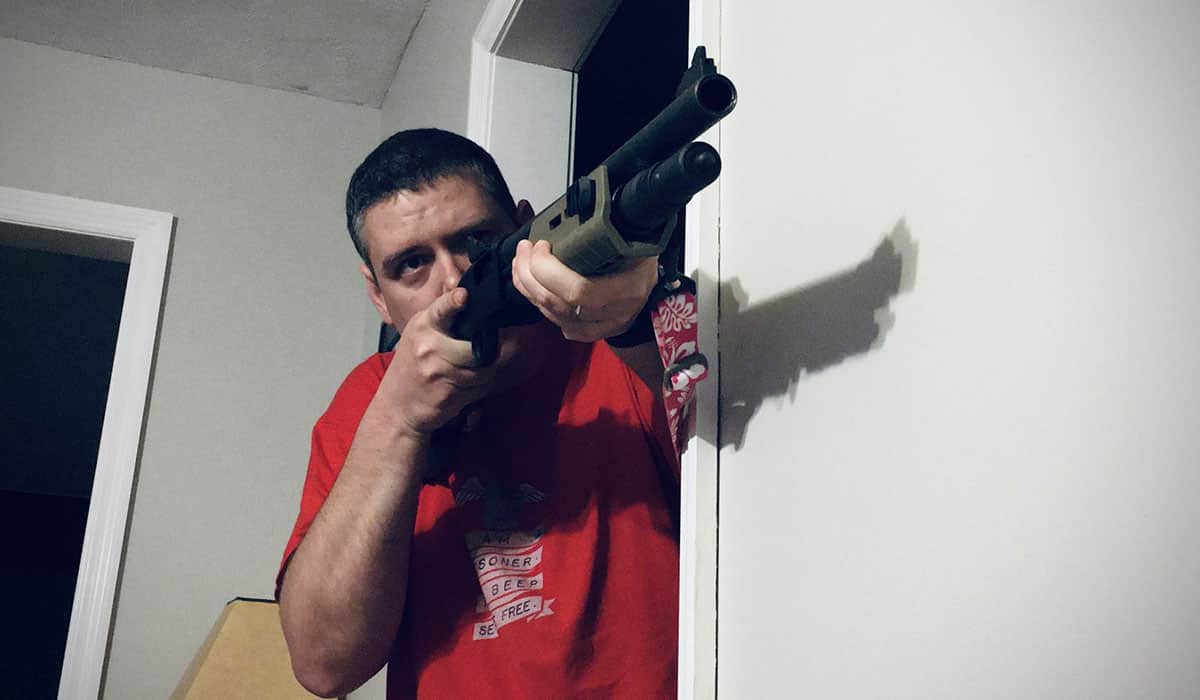

Home Security and Surveillance
How To Use A Shotgun For Home Defense
Modified: March 6, 2024
Learn how to effectively use a shotgun for home defense and enhance your home security and surveillance with expert tips and techniques. Safeguard your loved ones with this essential weapon.
(Many of the links in this article redirect to a specific reviewed product. Your purchase of these products through affiliate links helps to generate commission for Storables.com, at no extra cost. Learn more)
Introduction
Welcome to the ultimate guide on using a shotgun for home defense! When it comes to protecting your home and loved ones, having a reliable and effective security system is crucial. One of the most popular and powerful tools for home defense is a shotgun. With its versatility and firepower, a shotgun can provide an increased sense of safety and security.
In this comprehensive guide, we will walk you through everything you need to know about choosing, handling, and using a shotgun for home defense. From selecting the right shotgun to mastering aiming techniques, we will cover all the essential aspects to help you make informed decisions and develop the necessary skills to protect your home.
Before we dive into the details, it is important to note that using a firearm for home defense should always be approached with responsibility and caution. Familiarize yourself with local laws and regulations, and consider seeking proper training and guidance from professionals.
This guide is designed to provide you with valuable information that will empower you to make educated decisions about using a shotgun for home defense. So let’s get started on this exciting journey!
Key Takeaways:
- Choosing the Right Shotgun
When selecting a shotgun for home defense, consider factors like gauge, action type, barrel length, capacity, and accessories. Test different options before making a purchase to find the best fit for your needs. - Safety and Preparedness
Using a shotgun for home defense requires responsible ownership, regular training, and awareness of legal considerations. It’s crucial to prioritize safety, maintain your shotgun, and have a comprehensive home defense plan in place.
Choosing the Right Shotgun for Home Defense
When it comes to selecting a shotgun for home defense, there are several factors to consider. The right shotgun should meet your specific needs, provide reliability under stress, and be easy to handle. Let’s explore some key considerations to help you make an informed decision.
- 12 Gauge or 20 Gauge: These are the most common options for home defense shotguns. The 12-gauge shotgun offers a wider range of ammunition choices and greater stopping power, while the 20-gauge shotgun is lighter, has less recoil, and is easier to handle, especially for smaller-framed individuals.
- Pump-Action, Semi-Automatic, or Break-Action: Each type has its advantages. Pump-action shotguns, like the classic Remington 870, are reliable, easy to maintain, and typically more affordable. Semi-automatic shotguns, such as the popular Mossberg 930, offer faster follow-up shots but may be more complex and expensive. Break-action shotguns, like over-under or side-by-side models, are simple and reliable but have limited ammunition capacity.
- Barrel Length: For home defense, a shorter barrel length of around 18 to 20 inches is recommended. This allows for easier maneuverability in tight spaces without sacrificing effectiveness.
- Capacity: Consider the magazine capacity of the shotgun. Some shotguns come with an extended magazine tube, allowing for more rounds without the need for additional reloading.
- Accessories: Look for shotguns with accessory options such as rails for mounting accessories like flashlights, lasers, or optics. These can enhance your ability to identify and engage potential threats in low-light situations.
Ultimately, the best shotgun for home defense is the one that fits your individual needs and preferences. It’s always advisable to handle and try different shotguns at a local firearms store or shooting range before making a purchase.
Remember, selecting the right shotgun is an important decision, so take your time, do thorough research, and seek advice from experienced individuals or firearms experts.
Understanding Shotgun Basics
Before diving into using a shotgun for home defense, it’s essential to have a solid understanding of its basic components and operation. Let’s explore the fundamental elements of a shotgun.
Action: The action of a shotgun refers to the method by which it loads, fires, and ejects ammunition. The three common types of shotgun actions are pump-action, semi-automatic, and break-action. Understanding the action of your shotgun is crucial for safe and effective usage.
Barrel: The barrel is the long cylindrical tube through which the shot or slug is propelled. Shotguns typically have smoothbore barrels, although rifled barrels are also available for some models. The length of the barrel affects the spread and accuracy of the shot.
Chamber: The chamber is the part of the shotgun that holds the ammunition. It is located at the rear of the barrel and is responsible for housing and aligning the shell before firing.
Trigger and Safety: The trigger is the mechanism that releases the hammer or firing pin, initiating the discharge of the shotgun. The safety is a device that prevents the shotgun from firing accidentally. Familiarize yourself with the location and operation of both the trigger and safety on your specific shotgun.
Magazine: The magazine is the component that stores and feeds the ammunition into the chamber. Shotguns can have tubular magazines located underneath the barrel or detachable box magazines, depending on the model.
Stock and Grip: The stock of a shotgun is the part that is held against the shoulder, providing support and stability while firing. It can be made of wood, synthetic materials, or a combination of both. The grip refers to the part of the shotgun that the shooter holds with their dominant hand.
Sights: Shotguns typically have different types of sights to aid in aiming. These can include bead sights, which are a simple metal or plastic bead at the end of the barrel, or rifle-style sights, which may have adjustable rear and front sights for improved accuracy.
Understanding these basic components will help you familiarize yourself with your shotgun and enable you to operate it safely and effectively. Spend time handling and practicing with your shotgun to gain confidence and proficiency in its operation. In the next sections, we will explore setting up your shotgun for home defense and techniques for aiming and shooting.
Setting Up Your Shotgun for Home Defense
When it comes to setting up your shotgun for home defense, there are a few key considerations to keep in mind to ensure optimal performance and readiness. Let’s explore some important steps to set up your shotgun effectively.
1. Stock Length and Fit: Ensure that the stock length is appropriate for your body size and shooting style. A properly fitted stock will allow for better control and accuracy while reducing recoil impact.
2. Sling Attachment: Consider installing a sling attachment on your shotgun. A sling allows you to carry the weapon hands-free and provides a convenient way to secure it when not in use.
3. Light and Optics: Adding a flashlight and/or optics to your shotgun can greatly improve your ability to identify potential threats in low-light situations. Choose reliable and durable attachments specifically designed for shotguns.
4. Ammunition Holder: Consider adding an ammunition holder to your shotgun, such as a side saddle or stock shell holder. This will allow you to have quick access to additional rounds and reduce the need for reloading in critical situations.
5. Forend Grip: A forend grip can enhance your control over the shotgun and provide better stability during rapid firing or maneuvering through tight spaces. Choose a grip that fits comfortably in your hand and does not interfere with the operation of the shotgun.
6. Recoil Pad: If your shotgun does not already have a recoil pad, consider installing one. A recoil pad helps absorb and dissipate the recoil energy, reducing the impact on your shoulder and improving overall shooting comfort.
7. Safe Storage: Ensure that you have a secure and easily accessible storage solution for your shotgun. Whether it’s a gun safe, lockbox, or other approved storage method, keeping your firearm safely stored when not in use is essential for home security.
Remember, every modification or accessory added to your shotgun should be selected carefully and should not interfere with its reliability or function. Regularly inspect and maintain your shotgun to ensure that it remains in optimal working condition. By setting up your shotgun appropriately, you can have confidence in its performance during critical moments.
Ammunition Selection
The ammunition you choose for your shotgun plays a critical role in its effectiveness for home defense. Selecting the right ammunition ensures reliable performance, stopping power, and reduced risk of over-penetration. Let’s examine some important factors to consider when selecting ammunition for your shotgun.
- Shot Type: Shotguns can use different types of ammunition, including birdshot, buckshot, and slugs. For home defense, it is recommended to use buckshot or slugs, as they offer greater stopping power and penetration.
- Buckshot: Buckshot consists of multiple lead or copper plated pellets that are designed to spread upon exiting the barrel. Common buckshot sizes are 00, 0, or 4 Buck. Choose a buckshot size that balances spread with adequate penetration for your specific situation.
- Slugs: Slugs are large solid projectiles that provide increased accuracy and penetration. They are generally used for longer-range engagements or when precise shot placement is required. Rifled slugs are designed for smoothbore barrels, while sabot slugs are designed for use with rifled barrels.
- Shell Length: Shotguns come in different chamber lengths, typically 2 3/4, 3, or 3 1/2 inches. Ensure that the ammunition you select matches the chamber length of your shotgun. For home defense, 2 3/4 or 3-inch shells are commonly used.
- Recoil: Consider the recoil of different shotgun shells, as it can affect your ability to quickly follow up shots. Higher velocity or heavier loads generally result in increased recoil. Practice with different loads to determine what you can comfortably handle without sacrificing accuracy.
- Brands and Quality: Stick to reputable brands and high-quality ammunition that has been proven for self-defense purposes. This ensures reliability and consistency in performance when it matters most.
- Test and Evaluate: It is crucial to test and evaluate different types of ammunition through your shotgun to determine the performance, pattern, and recoil. Range time and hands-on experience will give you the confidence and knowledge needed to choose the most suitable ammunition for your specific needs.
Remember, ammunition selection should be based on your individual circumstances and the layout of your home. It’s important to strike a balance between stopping power, penetration, and minimizing the risk of over-penetration in a residential environment. Consult local laws and regulations regarding the use of specific ammunition types and ensure compliance with any restrictions.
By carefully considering these factors and testing different types of ammunition, you can select the best load to maximize the effectiveness of your shotgun for home defense.
Proper Grip and Stance
When it comes to effectively using a shotgun for home defense, having a proper grip and stance is crucial. A solid grip and a stable shooting position will help you control the recoil, stay on target, and deliver accurate shots. Let’s explore the key elements of a proper grip and stance.
Grip: Properly gripping the shotgun ensures stability and control while minimizing the impact of recoil. Here are some guidelines for a correct grip:
- Place your dominant hand on the shotgun’s grip, with your fingers wrapped firmly around it. Ensure your trigger finger is positioned outside the trigger guard until ready to shoot.
- Your non-dominant hand should support the forearm of the shotgun, with the thumb pointing towards the target. This hand helps maintain stability and control during firing.
- Keep your grip firm but not overly tight, allowing for natural movement and flexibility. This will help absorb recoil and prevent overcompensation while maintaining control of the shotgun.
Stance: Achieving a stable shooting stance is vital for accuracy and recoil management. Here’s how you can achieve a proper shooting stance:
- Position your feet shoulder-width apart, with your weight slightly forward, balanced evenly between both feet.
- Bend your knees slightly to provide greater stability and absorb any recoil impact.
- Ensure your upper body is slightly forward and leaning into the shotgun, creating a strong and balanced shooting platform.
- Maintain a relaxed posture with your shoulders squared, keeping your head up and eyes focused on the target.
The combination of a proper grip and stance allows for better control over the shotgun while minimizing recoil effects. Practice these techniques regularly to build muscle memory and increase your shooting proficiency.
Remember to keep practicing and refining your grip and stance to find what works best for you. With time and experience, you will develop a comfortable and effective shooting style that suits your individual needs.
Always keep your shotgun unloaded and locked in a safe place when not in use. Only load it when you are prepared to use it for home defense.
Aiming and Shooting Techniques
Aiming and shooting accurately is paramount when using a shotgun for home defense. To effectively engage potential threats and minimize the risk to yourself and others, mastering proper aiming and shooting techniques is essential. Let’s explore some key techniques to improve your accuracy and shooting proficiency.
Sight Alignment: Before firing the shotgun, it’s important to ensure proper sight alignment. This involves aligning the front sight of the shotgun with the rear sights. Shotguns typically have either a bead sight or a set of rifle-style sights. With the bead sight, focus on placing the bead at the top of the front sight ramp. With rifle-style sights, align the front sight post with the notch or aperture on the rear sight.
Sight Picture: Once the sights are aligned, it’s essential to establish a proper sight picture. This refers to the relationship between the front sight, rear sights, and the target. The goal is to have the aligned sights centered on the target. Focus on the front sight while maintaining awareness of the target and surroundings.
Shotgun Patterns: Shotguns discharge a spread of shot pellets, creating a pattern as they travel towards the target. Understanding your shotgun’s pattern at different distances is crucial for accurate shooting. Familiarize yourself with the effective range of your shotgun and set realistic expectations for shot placement.
Point Shooting: Close-range engagements in home defense scenarios may not allow for precise sight alignment and aiming. In these situations, point shooting can be effective. Point shooting involves quickly bringing the shotgun to eye level and acquiring the target visually without relying solely on sights. Practice point shooting drills to develop your ability to quickly and instinctively aim at close distances.
Follow-Through: After firing a shot, maintaining follow-through is important. Continue to hold the shotgun firmly and keep your sights on the target, even after the shot is fired. This helps ensure shot placement and allows for follow-up shots if necessary.
Trigger Control: Proper trigger control is essential for accurate shooting. Practice applying smooth and controlled pressure to the trigger without jerking or flinching. This ensures a clean and surprise break, reducing the potential for shots to be pulled off target.
Remember, developing proficient aiming and shooting skills with a shotgun takes time and practice. Regular range time, as well as dry-fire exercises at home, can greatly improve your accuracy and overall shooting performance.
Always prioritize safety and follow the fundamental rules of safe firearm handling while practicing your aiming and shooting techniques. Seek professional instruction, if available and feasible, to further enhance your skills and receive personalized guidance.
Engaging Targets in Close Quarters
Engaging targets in close quarters requires specific techniques and considerations to ensure effectiveness and safety. In home defense scenarios, where encounters may occur in confined spaces, it’s crucial to be prepared for close-quarters engagements. Let’s explore some key strategies for engaging targets in close quarters with your shotgun.
- Assess the Threat: Before engaging a potential threat, quickly assess the situation to determine if firing your shotgun is necessary. Evaluate the proximity of the threat, their level of aggression, and the potential risk to yourself and others. Always prioritize your safety and the safety of innocent individuals.
- Maintain Distance, if Possible: Whenever possible, maintain distance from the threat to increase your reaction time and provide a better opportunity to assess the situation. Stand your ground and create space, if feasible, to create a buffer zone between yourself and the potential threat.
- Controlled Movement: If forced to move within close quarters, do so cautiously and with purpose. Move deliberately and maintain a balanced and stable shooting platform. Be aware of any obstacles or potential cover that can be used to your advantage.
- Utilize Cover and Concealment: When engaging a threat, use cover and concealment to protect yourself. Cover provides physical protection from incoming threats, while concealment helps to obscure your location and make it more difficult for the threat to see and target you.
- Move and Shoot: If necessary, practice shooting while moving to increase your chances of effectively engaging the threat and avoiding being a stationary target. Moving unpredictably can also make it harder for the threat to accurately target you.
- Engage Center Mass: In close-quarters engagements, aim for the center of mass of the threat. This area provides the largest target and offers the greatest chance of stopping the threat quickly. Remember to maintain proper sight alignment and sight picture while engaging the target.
- Multiple Shots and Follow-ups: In close-quarters situations, it may be necessary to deliver multiple shots to neutralize the threat effectively. Train for rapid follow-up shots while maintaining control and accuracy.
- Maintain Situational Awareness: Throughout the engagement, maintain situational awareness of your surroundings. Be aware of other potential threats, the location of family members or roommates, and potential escape routes. Maintaining situational awareness helps ensure your safety and the safety of others.
Remember, each close-quarters engagement is unique, and there are no one-size-fits-all solutions. Regular training, scenario-based drills, and seeking professional instruction can significantly improve your ability to effectively engage targets in close quarters.
Be aware of your local laws and regulations regarding the use of force in self-defense situations. While it’s important to protect yourself and others, it’s equally important to act within the boundaries of the law.
Clearing Malfunctions
Malfunctions can occur with any firearm, including shotguns. Knowing how to quickly and safely clear malfunctions is essential for maintaining the reliability and functionality of your shotgun. In high-stress situations, the ability to address malfunctions efficiently can be critical. Let’s explore some common shotgun malfunctions and the steps to clear them.
Failure to Feed: This occurs when a new round fails to fully enter the chamber. To clear a failure to feed:
- Keep your finger off the trigger and maintain muzzle awareness.
- Rack the slide or pump forcefully to eject the faulty round.
- Inspect the chamber for any obstructions and ensure it is clear.
- Load a fresh round into the chamber and resume shooting, if necessary.
Failure to Eject: Also known as a “stovepipe,” this happens when a spent shell casing does not fully eject from the shotgun. To clear a failure to eject:
- Maintain proper muzzle awareness and keep your finger off the trigger.
- Tap the bottom of the shotgun to help dislodge the jammed shell casing.
- Rack the slide or pump forcefully to fully cycle and eject the shell casing.
- Ensure the chamber is clear and proceed with shooting or reload if necessary.
Double Feed: This occurs when two rounds are loaded into the chamber simultaneously. To clear a double feed:
- Keep your finger off the trigger and maintain muzzle awareness.
- Lock the slide or pump to the rear, exposing the chamber.
- Remove the magazine to relieve pressure on the rounds.
- Visually and physically check the chamber for any obstructions.
- Clear any obstructions or debris causing the double feed with a cleaning rod or other suitable tool.
- Load a fresh magazine and rack the slide or pump to chamber a round.
It’s important to practice clearing malfunctions regularly, both during live-fire training sessions and through dry-fire drills. Simulate different types of malfunctions and become proficient in quickly diagnosing and resolving them.
Seek Professional Training: Consider seeking professional instruction from qualified firearms trainers. They can guide you through proper malfunction clearance techniques specific to your shotgun and provide feedback to help improve your skills.
Remember, your safety and the safety of those around you should always be the top priority when handling firearms and clearing malfunctions. Practice responsible gun handling, maintain proper muzzle discipline, and seek assistance from a professional if you encounter persistent or complex malfunctions.
Read more: How To Pick A Shotgun For Home Defense
Additional Considerations for Home Defense
When using a shotgun for home defense, there are a few additional factors to consider to ensure the maximum effectiveness and safety. Let’s explore some important considerations that go beyond the technical aspects of using a shotgun.
Training and Practice: No matter how effective your shotgun is, proper training and regular practice are essential for developing the necessary skills and confidence. Seek professional training to understand the fundamentals of shotgun handling, shooting techniques, and home defense strategies. Regular range practice will help maintain proficiency and familiarity with your shotgun.
Awareness and Preparedness: Being aware of your surroundings and maintaining a high level of situational awareness is crucial for home defense. Understanding potential entry points, developing an emergency plan, and practicing safe room procedures can improve your preparedness in case of a security breach.
Home Security Systems: Alongside your shotgun, consider integrating other layers of home security systems. This may include surveillance cameras, motion sensor lights, alarm systems, and reinforced doors and windows. These measures can provide early warning and deter potential threats.
Communication with Family Members: It’s important to communicate with family members or other occupants of your household about your home defense plan. This includes the use of firearms, designated safe areas, and procedures to follow in case of an intruder. Regularly rehearsing these plans can improve coordinated responses during emergencies.
Legal Considerations: Familiarize yourself with local laws and regulations regarding the use of firearms for self-defense in your jurisdiction. Understand your rights and responsibilities as a gun owner, including the use of lethal force. Comply with all applicable laws and seek legal advice if needed.
Maintaining and Securing Your Shotgun: Regularly clean and maintain your shotgun to ensure its reliability and longevity. Store it securely in a locked safe or cabinet, separate from ammunition, to prevent unauthorized access. Practice trigger and muzzle discipline within your home to ensure the safety of yourself and others.
Remember, using a shotgun for home defense should always be a last resort when all other safe options have been exhausted, and your life or the lives of your loved ones are in immediate danger. It is essential to evaluate and understand the potential consequences and legal implications of using lethal force.
By considering these additional factors, you can enhance your overall home defense strategy and ensure that you are prepared to effectively respond to potential threats while prioritizing the safety and security of your home and family.
Conclusion
Congratulations! You have now reached the end of our comprehensive guide on using a shotgun for home defense. We have covered a wide range of topics, from choosing the right shotgun to clearing malfunctions and considering additional factors for home defense. By learning and implementing the knowledge gained from this guide, you are better equipped to protect yourself, your loved ones, and your home.
Remember, responsible firearm ownership and usage require continuous training, practice, and adherence to legal guidelines. Regularly engage in range time to refine your shooting skills and familiarize yourself with your shotgun’s operation. Seek professional guidance to further enhance your knowledge and proficiency.
While a shotgun can provide an effective means of self-defense, it is essential to prioritize safety and responsible gun handling. Always handle your firearm with care, keeping the muzzle pointed in a safe direction and your finger off the trigger until ready to shoot. Store your shotgun securely, away from unauthorized access, and comply with local laws and regulations.
Additionally, a shotgun should be seen as part of a comprehensive home defense plan that includes other security measures such as alarm systems, reinforced doors and windows, and good communication with your family or household members.
Ultimately, using a shotgun for home defense comes with great responsibility. Regularly assess your readiness, stay informed about changes in laws, and remain committed to keeping yourself and your loved ones safe. With the knowledge and skills acquired from this guide, you are now equipped to make informed decisions and take the necessary steps to protect what matters most.
Stay safe, be responsible, and may you find peace of mind knowing that you are prepared for any potential threats that may come your way.
Frequently Asked Questions about How To Use A Shotgun For Home Defense
Was this page helpful?
At Storables.com, we guarantee accurate and reliable information. Our content, validated by Expert Board Contributors, is crafted following stringent Editorial Policies. We're committed to providing you with well-researched, expert-backed insights for all your informational needs.
